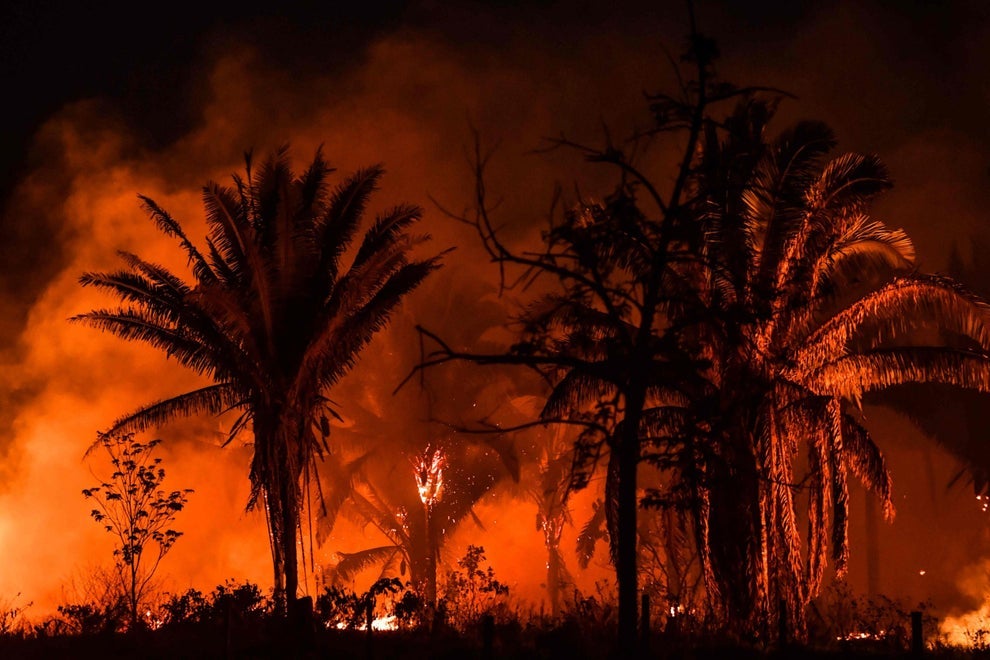Climate crisis could turn 40% of Amazon rainforest into savanna
Rainforests ‘very sensitive to global change and can rapidly lose their ability to adapt’, say researchers

Your support helps us to tell the story
From reproductive rights to climate change to Big Tech, The Independent is on the ground when the story is developing. Whether it's investigating the financials of Elon Musk's pro-Trump PAC or producing our latest documentary, 'The A Word', which shines a light on the American women fighting for reproductive rights, we know how important it is to parse out the facts from the messaging.
At such a critical moment in US history, we need reporters on the ground. Your donation allows us to keep sending journalists to speak to both sides of the story.
The Independent is trusted by Americans across the entire political spectrum. And unlike many other quality news outlets, we choose not to lock Americans out of our reporting and analysis with paywalls. We believe quality journalism should be available to everyone, paid for by those who can afford it.
Your support makes all the difference.As much as 40 per cent of the Amazon rainforest could be transformed into drier savanna-like landscape if rainfall levels continue to drop as a result of climate change.
Researchers warned nearly half of the world’s largest tropical rainforest is at a tipping point and risk of drying out permanently if global carbon emissions are not cut back.
Scientists at the Stockholm Resilience Centre, an independent research institute which specialises in environmental issues, used mathematical models to test how rising temperatures caused by climate change would affect tropical rainforests around the world.
"In around 40 percent of the Amazon, the rainfall is now at a level where the forest could exist in either state – rainforest or savanna, according to our findings," said the lead author of the study, Arie Staal.
Savannas are ecosystems characterised by less tree cover and greater grassland, and tend to exist in temperate areas with less rainfall than that needed to foster a rainforest.
Already, rising greenhouse gas emissions has caused a drop in the amount of rain falling on the Amazon in several regions and this trend is expected to worsen as South America warms thanks to climate change.
As rainforests generate some rain themselves by leaves releasing water vapour, their loss also exacerbates the already collapsing rain levels.
“As forests shrink, we get less rainfall downwind and this causes drying leading to more fire and forest loss: a vicious cycle,” said Mr Staal, a former postdoctoral researcher at the SRC and the Copernicus Institute of Utrecht University.
“We understand now that rainforests on all continents are very sensitive to global change and can rapidly lose their ability to adapt," added Ingo Fetzer, a researcher at the SRC.
"Once gone, their recovery will take many decades to return to their original state. And given that rainforests host the majority of all global species, all this will be forever lost."
As well as being home to the most extensive biodiversity on Earth, rainforests such as the Amazon suck huge amounts of carbon out of the atmosphere, slowing down climate change.
The rainforest has come under increased threat following the election of Brazil’s far-right president Jair Bolsonaro.
Mr Bolsanaro has cast doubt about the existence of manmade climate change and long favoured more exploitation and development by large agricultural businesses in the Amazon.
Burning, logging and farming of the Amazon has noticeably increased since his rise to power in 2018, with data from Brazil’s own space agency showing fires had reached a ten-year high in August.

Join our commenting forum
Join thought-provoking conversations, follow other Independent readers and see their replies
Comments